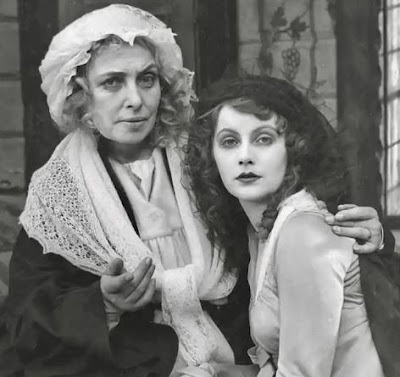I have to be honest and admit that whilst I’d heard of Chantal Akerman I’d never seen her work and when this film elbowed its way past Ozu, Welles and Hitchcock to take top spot in the 2022 Sight and Sound poll of the greatest films ever made, I was surprised and frankly disconcerted in the way of Men Who Keep Lists… After watching the film on the big screen at a preview consider me not only persuaded but enthused yes, even on a soggy Monday night having drunk a little too much tea, I was engrossed in Akerman’s forensic beauty for the full 3 hours and 21 minutes.
For the first hour, the first day of the story, you’re beginning
the process of pattern recognition – unconsciously taking in more detail than
you realise. My first thoughts were that the film was going to be too small in
scale – so much time spent in small spaces mostly in the kitchen, bedroom and
living room of the titular character’s apartment at the above address – but once
the routines are revealed and challenged in the most nuanced of ways, the film
is incredibly cinematic. You have to become lost in the details and the image,
you have to watch this in the connected intimacy of a cinema, no peripheral
distractions, no pausing, no chatting or checking the football scores.
This film is focused on a single mother, Jeanne Dielman,
portrayed with supple discipline by Delphine Seyrig who I had last seen in Daughters
of Darkness (1971) but who, of course, had a lengthy career in European art
films including Last Year at Marienbad (1961) and The Discreet Charm
of the Bourgeoisie (1972). She fully understands the brief here in acting
out the domestic routines which, as Akerman said, were always regarded as the
lowest in the hierarchy of cinematic imagery – peeling potatoes, washing up and
making coffee hardly compares with a car accident or a kiss.
 |
| Jan Decorte and Delphine Seyrig |
None of this is accidental and absolutely relates to women’s
place in society: “Woman's work comes out of oppression and whatever comes
out of oppression is more interesting…" she said in an interview
featured in World Film Directors Volume Two (1987) edited by John
Wakeman. The article also quotes film critic Gary Indiana in saying that “Akerman’s
brilliance is her ability to keep the viewer fascinated by everything normally
left out of movies…” and the feminist critic B. Ruby Rich admiring the
director’s ground-breaking presentation of “… the materiality of women’s
time … the invention of a new language… transmitting truths previously unspoken…”.
Akerman was wary of being labelled a feminist filmmaker but
there’s no doubt that this tribute to her mother’s own resilience – she was a Holocaust
survivor - made with an all-female crew, is a powerful statement about what it
means to be a woman struggling to exist and to bring up her son Sylvain (Jan
Decorte). There is so little space in her life for anything frivolous or
self-serving, no treats or breaks from the drudgery. Money is too tight and so,
she earns what she needs through sex work, with her clients’ arrivals all part
of her relentless routine.
These scenes show only obliquely what is happening but for
most of the film the action if firmly focused on the details of kitchen and
dinning room with long takes from a low angle showing Jeanne at work, her
concentration unbroken. If it reminded me of anyone it was Ozu and Tokyo
Story was one of Akerman’s favourite films but isn’t it on everyone’s list?
Her creation here is very much all her own and has to be experienced in the BFI’s
comfy seats in a settled mood as the images wash over you and you become
synchronised with the process of Jeanne’s life…
The film is being re-released by the BFI to celebrate its 50th Anniversary and there will also be a major two-month retrospective season at BFI Southbank, Chantal Akerman: Adventures in Perception (3rd February – 18th March), which features almost all of her work from fiction features, documentaries, shorts to archive interviews. There will be a BFI Distribution UK-wide cinema release of a 2K restoration of Jeanne Dielman starting on 7th February as well as a UK touring cinema package of her key films and curated BFI Player Subscription.
Full details are on the BFI website and this will be a
journey of discovery for many and one that will further cement the filmmaker’s
reputation as someone who deserves to be counted amongst the very best.
Lot's of goodies in the BFI Shop too... click on the cover to buy!
















































